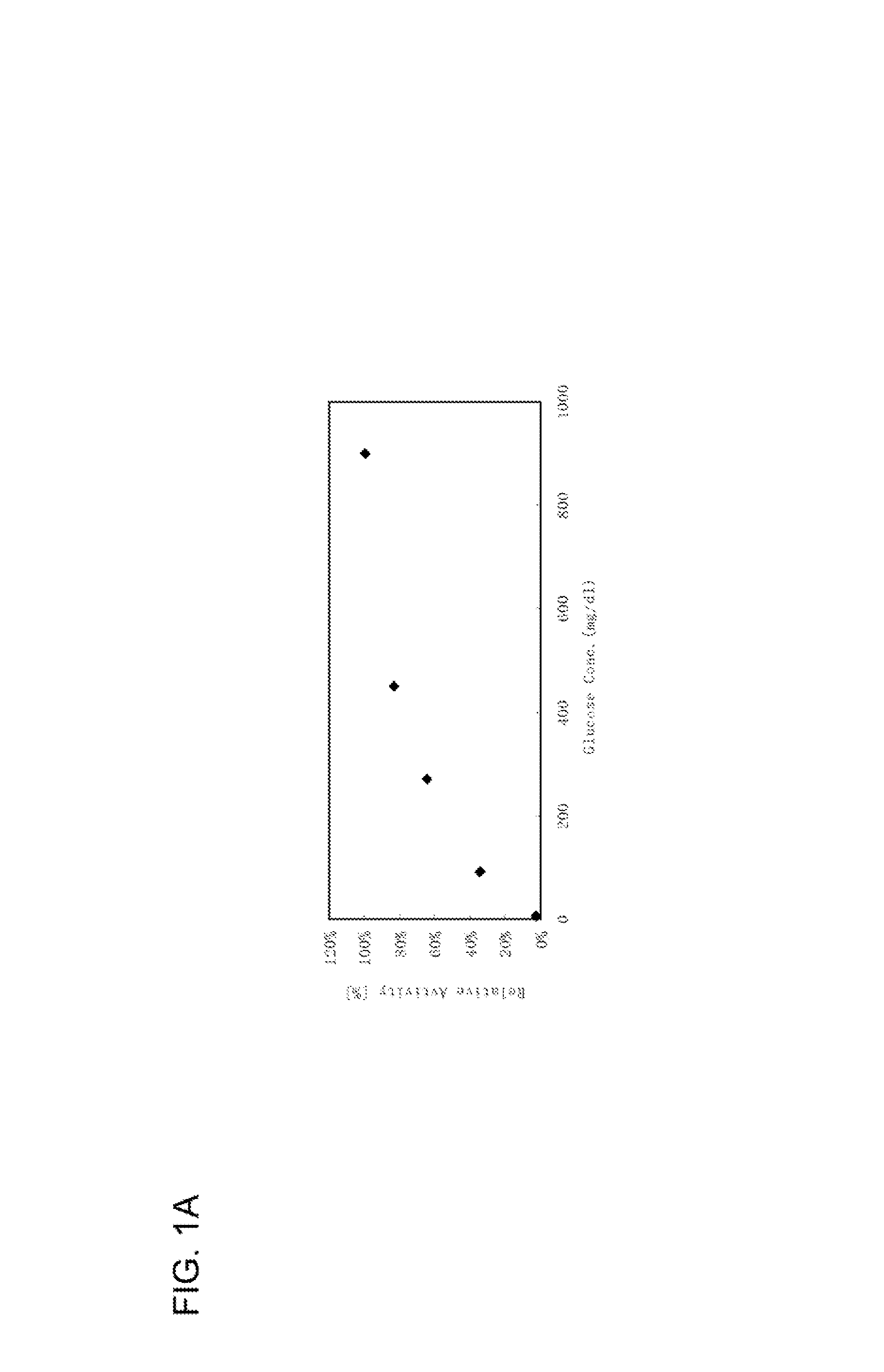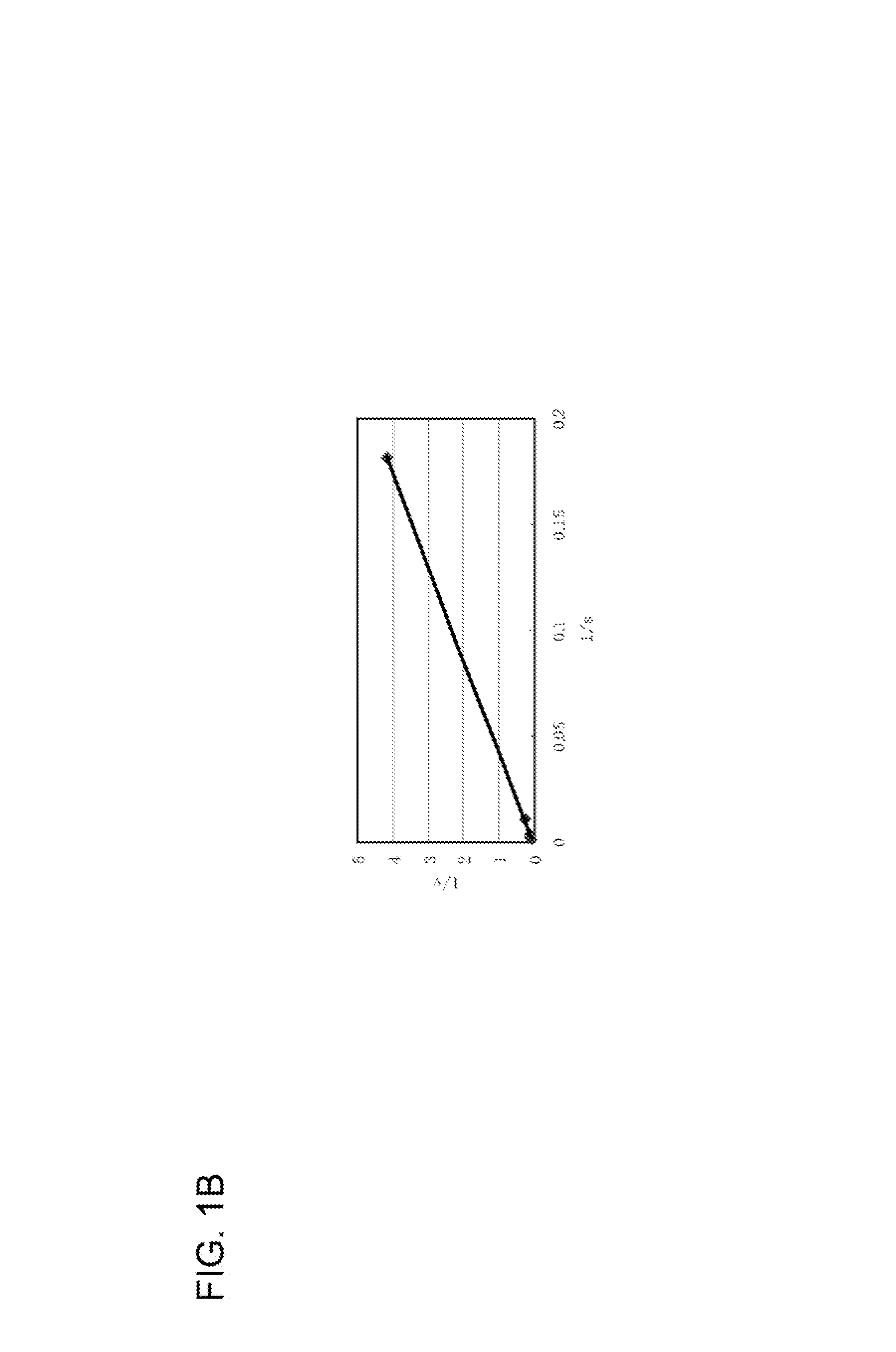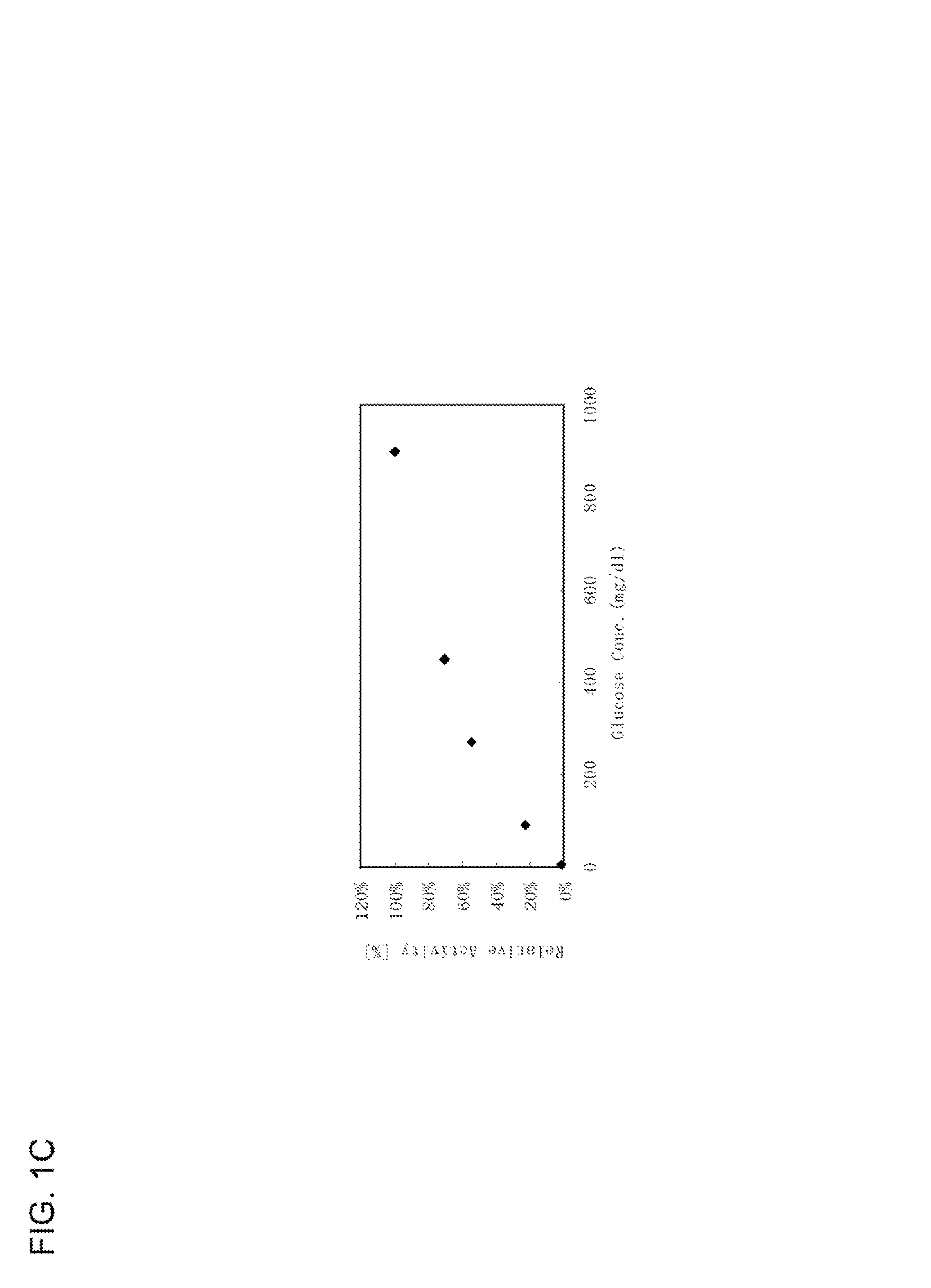Modified glucose dehydrogenase
a glucose dehydrogenase and glucose technology, applied in the field of fadconjugated glucose dehydrogenase, can solve the problems of error caused in the measured value, and the disadvantage of pqq-gdh that it reacts also with sugars other than glucose such as maltose and galactose, so as to reduce the susceptibility to inhibitors
- Summary
- Abstract
- Description
- Claims
- Application Information
AI Technical Summary
Benefits of technology
Problems solved by technology
Method used
Image
Examples
example 1
Construction of Plasmid pAFF4
[0076]A GLD gene derived from Aspergillus terreus FERM BP-08578 strain disclosed in Patent document 1 was isolated by a common procedure, followed by removal of a polynucleotide encoding a signal sequence (amino acids at position 1-19 in the SEQ ID NO:1) from said gene to obtain a wild-type GLD gene. The PCR was then performed by using the wild-type GLD gene as a template and oligonucleotides represented by SEQ ID NO: 3 and NO:4 as a primer DNA (F) and a primer DNA (R), respectively. The primer DNA (F) had been phosphorylated in advance. The resulting PCR product was treated with SalI and introduced into a plasmid pAFF2 (given over by National Institute of Advanced Industrial Science and Technology at 3-1, Kasumigaseki 1-chome, Chiyoda-ku, Tokyo 100-8921 JAPAN) that had been treated with NaeI and SalI and dephosphorylated at the NaeI cleavage site to obtain a plasmid pAFF3GLD. Next, the PCR was then performed by using the wild-type GLD gene as a template...
example 2
Acquisition of Transformant Having Modified GLD Gene Having Random Mutation Introduced Therein
[0078]In order to introduce a random mutation into the wild-type GLD gene, oligonucleotides as shown below were designed and synthesized. A primer DNA (F) has a restriction enzyme BglII cleavage site, and a primer DNA (R) has a restriction enzyme XbalI cleavage site.
[0079]
Primer DNA (F):(SEQ ID NO: 7)5′ggcagatcttccaactccacgtccgccaaatatgattat 3′Primer DNA (R):(SEQ ID NO: 8)5′acatgcatgctctagactaacgacgaccagcatcggccttgatgag3′
[0080]Using the plasmid pAFF4GLD containing the wild-type GLD gene (SEQ ID NO: 2) obtained in Example 1, and the primer DNA (F) represented by SEQ ID NO: 7 and the primer DNA (R) represented by SEQ ID NO: 8 synthesized in Example 2, a plasmid into which a random mutation was introduced was obtained by means of a GeneMorph II Random Mutagenesis Kit (manufactured by Stratagene, Inc.) according to an experimental procedure attached to the kit. After E. coli JM109 Competent Cel...
example 3
Evaluation of Enzymatic Activity of GLD in Transformant Having the Modified GLD Gene Having Random Mutation Introduced Therein
[0081]Into each well of a 96-well microplate (manufactured by Nunc, Inc.), a YPD medium containing 125 μL of 1.0% (w / v) yeast extract (manufactured by BD), 2.0% (w / v) tryptone (manufactured by BD), 2.0% (w / v) glucose (manufactured by Wako Pure Chemical Industries, Ltd.) was dispensed, and the transformant colonies obtained in Example 2 were inoculated thereinto one by one.
[0082]After shaking culture at 30° C. and 1,000 rpm for 24 hours, the culture mixture was centrifuged and the supernatant was collected.
[0083]According to the above-mentioned method for the determination of enzymatic activity, a blank value and a sample value were determined using a plate reader, and the relative activity (%) was obtained by dividing the sample value by the blank value. The mutant strains that showed a significant increase in the relative activity were selected and isolated,...
PUM
| Property | Measurement | Unit |
|---|---|---|
| light path length | aaaaa | aaaaa |
| pH | aaaaa | aaaaa |
| volume ratio | aaaaa | aaaaa |
Abstract
Description
Claims
Application Information
 Login to View More
Login to View More - R&D
- Intellectual Property
- Life Sciences
- Materials
- Tech Scout
- Unparalleled Data Quality
- Higher Quality Content
- 60% Fewer Hallucinations
Browse by: Latest US Patents, China's latest patents, Technical Efficacy Thesaurus, Application Domain, Technology Topic, Popular Technical Reports.
© 2025 PatSnap. All rights reserved.Legal|Privacy policy|Modern Slavery Act Transparency Statement|Sitemap|About US| Contact US: help@patsnap.com



